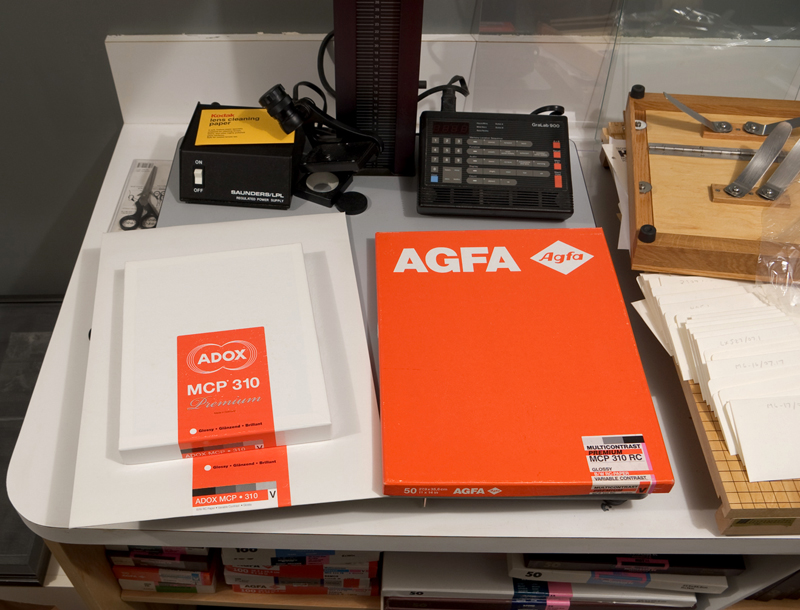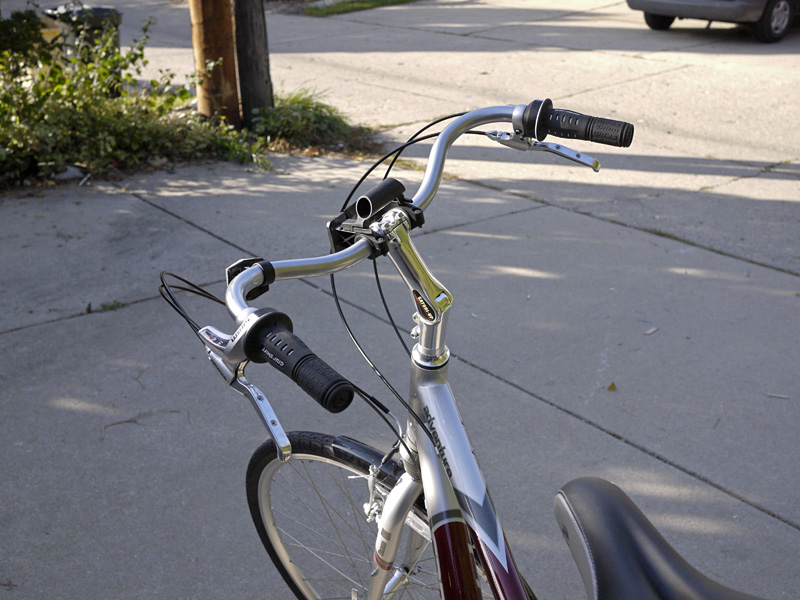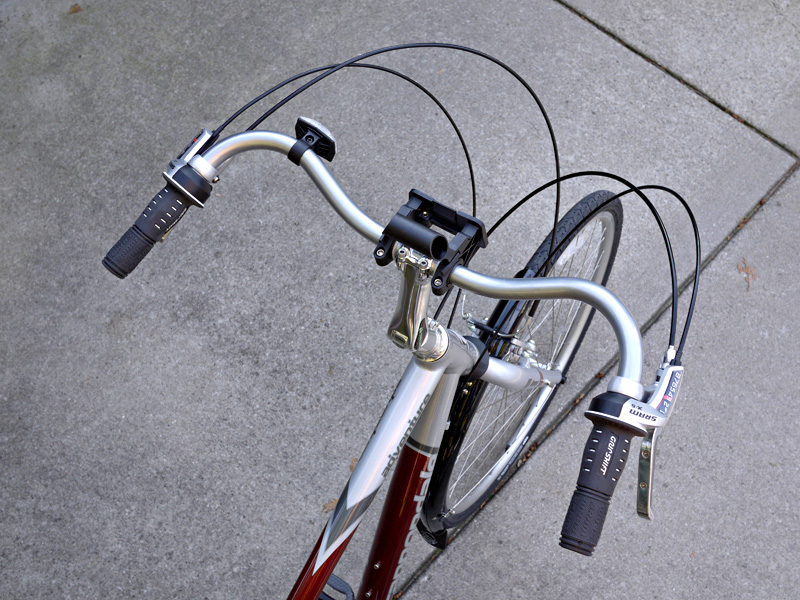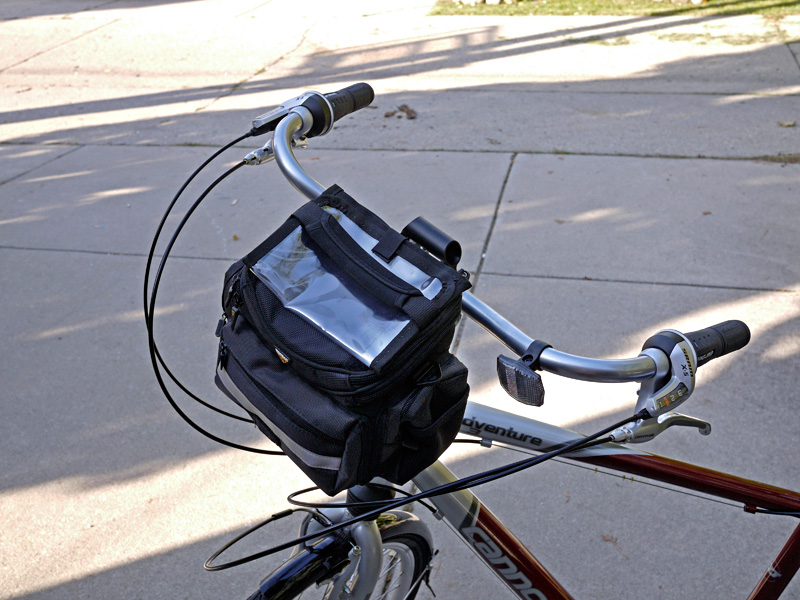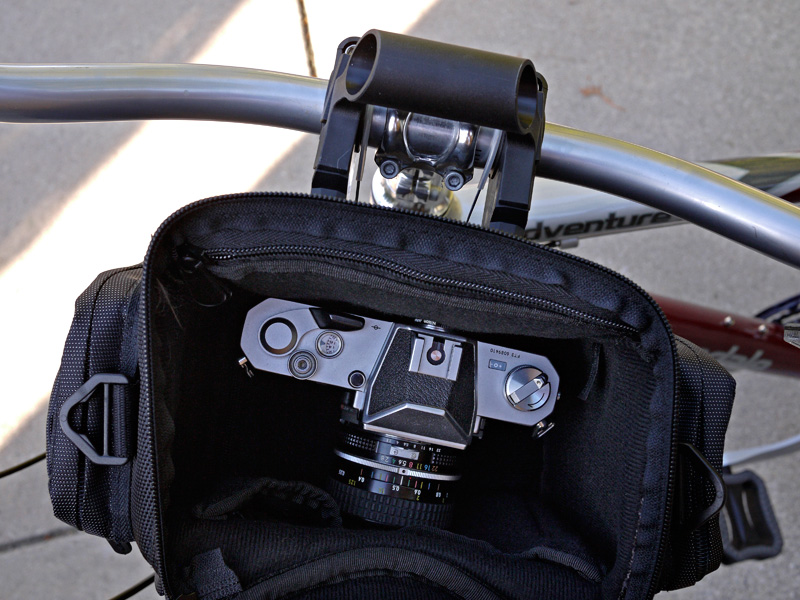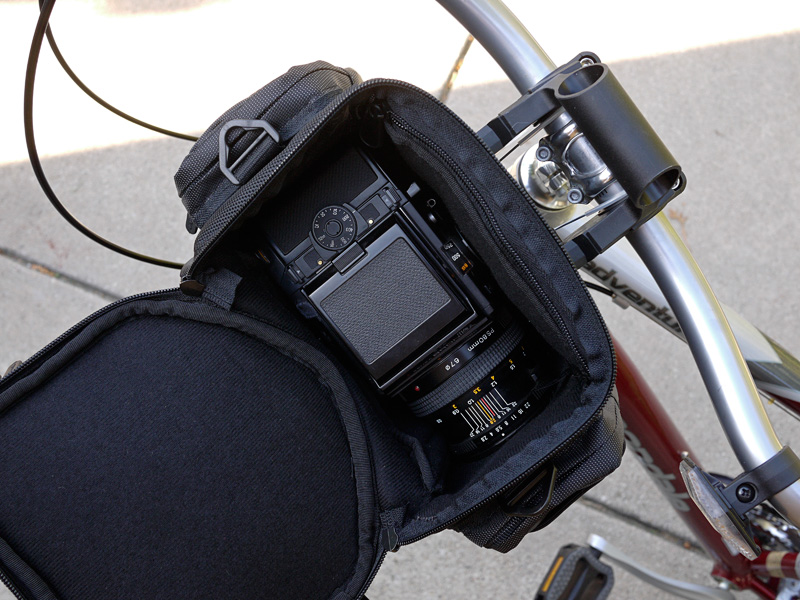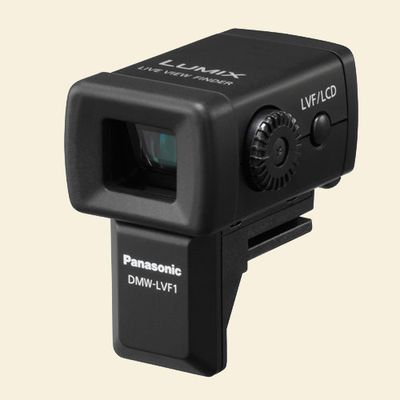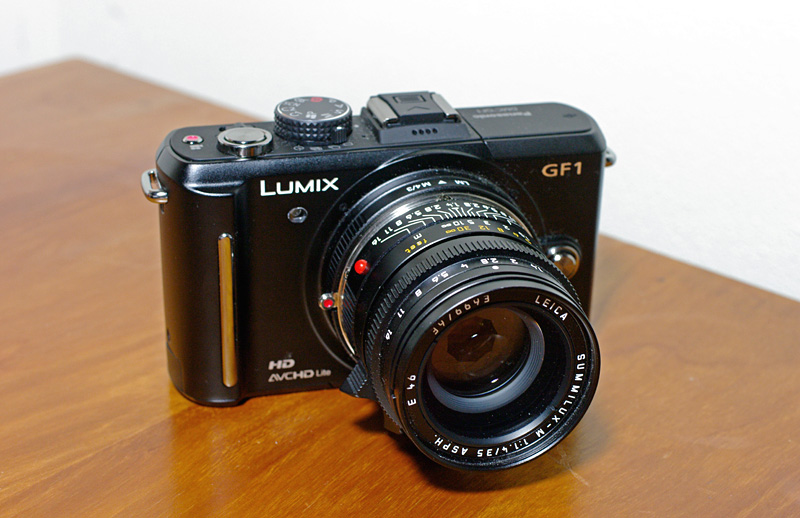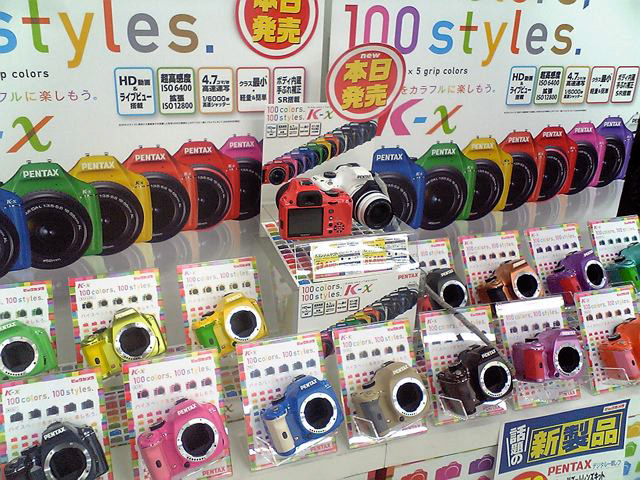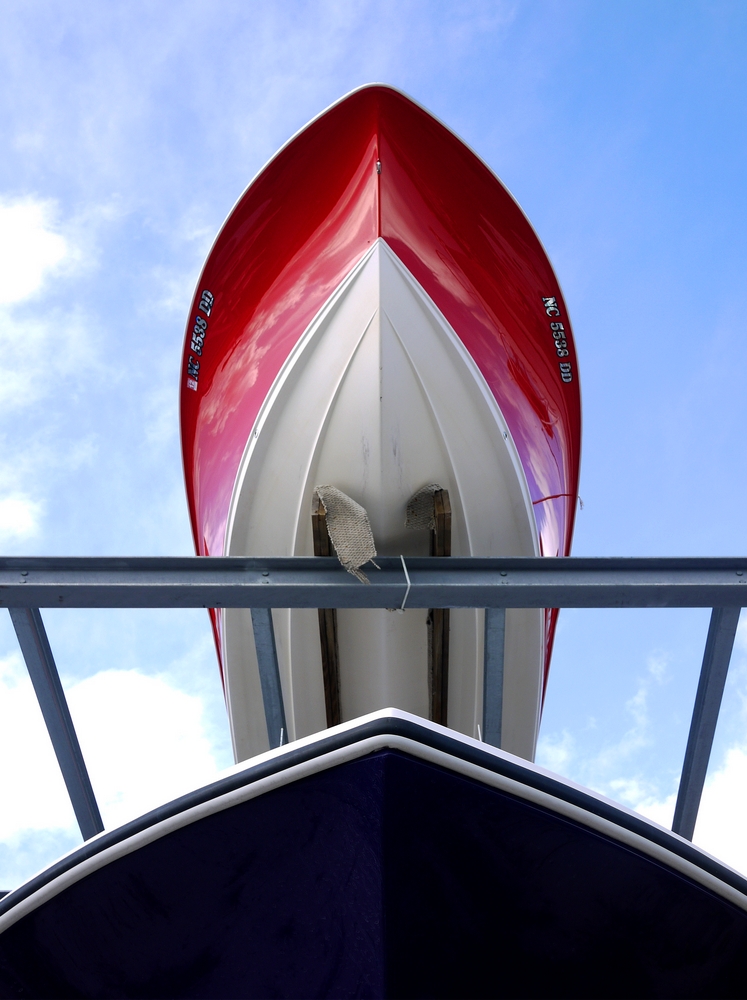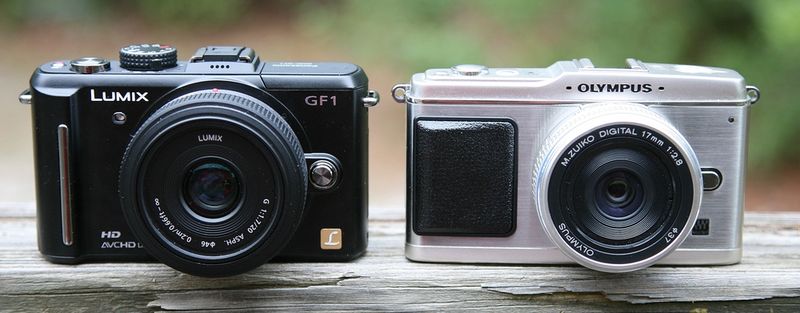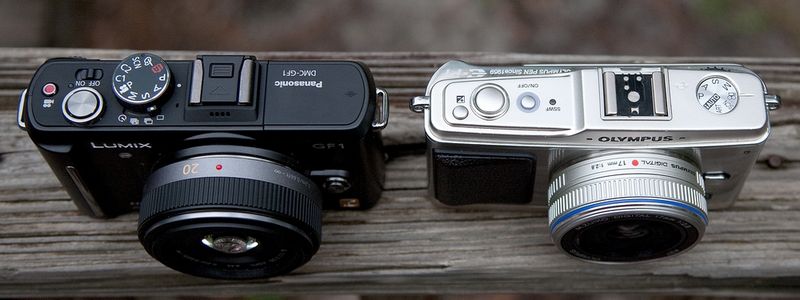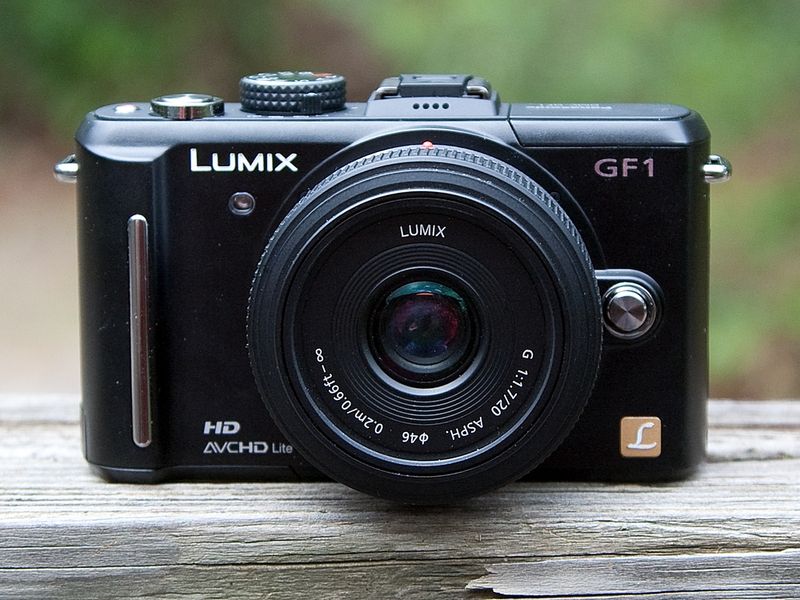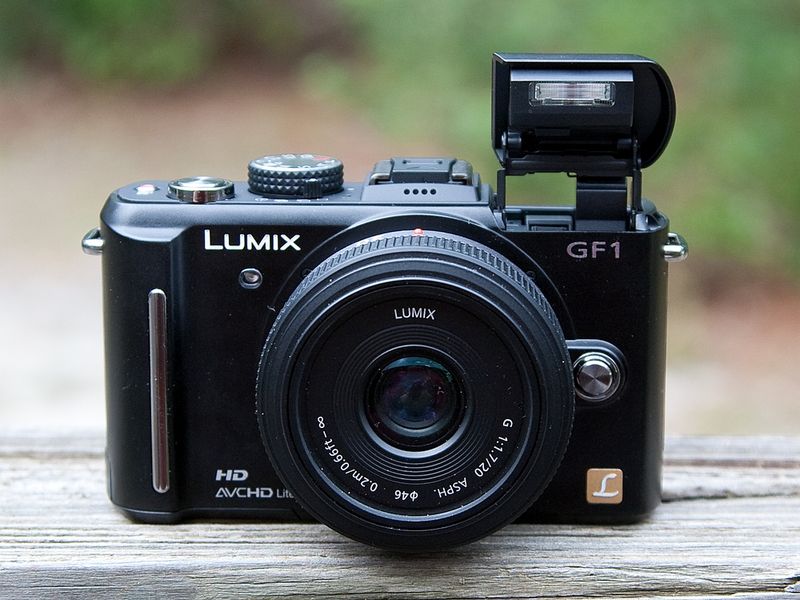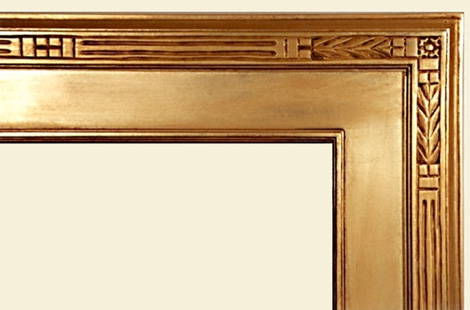
On Sundays I sometimes write off-topic posts that have little or naught to do with photography. This week, plugs: that is, a few endorsements of stuff I happen to like. Some of these you might have heard before from me. Apologies if I repeat myself.
Who Reads TOP? Bronislaus Janulis reads TOP
First of all, ever wonder where the frames for priceless museum paintings come from? They're obviously not just stock moldings from the U-Frame-It down at the local strip mall. Regular perusers of the site will recognize the name Bron Janulis from the comments section, where he frequently contributes. Bron is a painter, photographer, and wood-carver from South Bend, Indiana, who makes his living creating custom-made, very high-end frames for artwork. Working craftsmen hold a particular appeal for me; if you feel the appeal too, check out Bron's frame offerings at his website. Granted, most are not for photographs, being better suited for paintings. But they're beautiful. Keep Bron in mind if you have something precious you need a fine frame for, or if you know someone who does.
-
 Photo: cc Fai Ho
Photo: cc Fai Ho
Pieter Wispelwey and Dejan Lazik
Pieter Wispelwey
This rightly belongs in a "music notes" post, but I thought I'd put in a plug for another recent find. Pieter Wispelwey and Dejan Lazik's traversal of the Beethoven Complete Sonatas and Variations for 'Cello and Piano, issued in 2005 on the Channel Classics label, is terrific on any number of points—the two discs are superlatively played, very expressive, and outstandingly well recorded. If you like this music you probably have a couple of versions of these pieces already, and maybe favorite artists in the repertoire. I also like Pieter's earlier traversal with Lois Shapiro on period instruments. But this is well worth hearing. Just terrific. Available in CD or hybrid SACD, and on iTunes and eMusic. And from the Channel Classics website. And probably elsewhere as well.
-
Bob Latino
Another richly deserved plug for Bob Latino, who sells tube amplifier kits. Bob's kits amount to replica Dynaco Stereo 70 amps*. Dynaco, for those of you too young to remember (it was before my time too, really) sold inexpensive kit amps that helped turn a whole generation on to electronics and stereo.They're still so plentiful that several different outfits make and sell replacement input boards for them, the input board being the biggest weak point of the original. There's even a small cottage industry on Audiogon selling hot-rodded originals in candy colors.
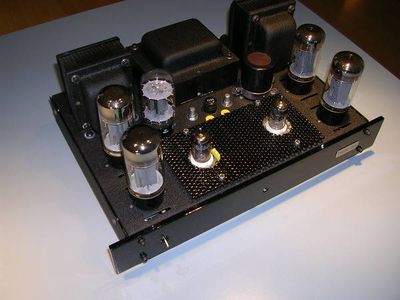
Back-on-black rebuild by Will Vincent, who often paints his rebuilds red, purple, or yellow.
And, over the years, suppliers started selling replacement parts of all kinds for the originals. I don't know whether Bob was the first person to figure out that you could put together a whole new amp using only new parts, but that's what he sells...and from what I hear, his assembly instructions are outstanding. (Bob built mine...he'll build one for you, too, for a very modest premium.)
There are still some ways this could be improved, in my opinion. A standard IEC C14 chassis socket is needed in place of the captive lamp cord, and the input jacks are just too close together for many of today's interconnects. And see that stereo/mono switch on the front panel in the picture below? It's a dummy! The circuitry degrades the sound, so Bob leaves it out.
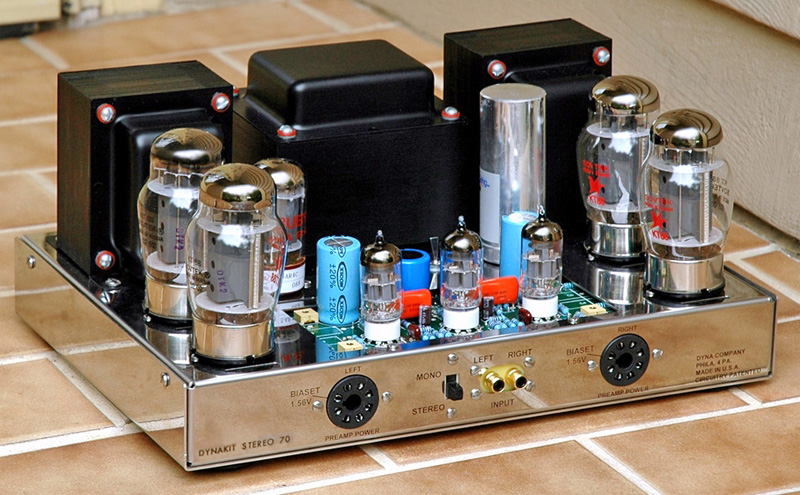 Full-tilt boogie: Bob's supercharged VTA ST-120, sporting KT-88 output tubes, beefier transformers, and upgraded caps. 60 watts per side.
Full-tilt boogie: Bob's supercharged VTA ST-120, sporting KT-88 output tubes, beefier transformers, and upgraded caps. 60 watts per side.
The big 120 will drive most speakers, but efficient speakers are still
best—especially with my VTA ST-70, which I run with EL-34s. For those
who are really ready to chug the Kool-Aid, Peter Comeau designed a replica Dynaco
A-25 kit (the WD25A) that's sold through World Designs in Britain. Watch out, though, because their shipping costs to the States are excessive.
Of course, nothing matters if the sound quality isn't there, and my Bob Latino ST-70 replica is the best amp I've ever owned and one of the best I've ever heard. I love it. It has none of the weaknesses of the original. There are stories on the internet of people giving up $5,000 conrad-johnsons and Air Tights for this thing, and I believe them. Simply the most satisfying audio purchase of my life, is all.
How's that for a plug?
I should add that I don't know Bob, except as a customer. Check out his web page.
-
Keep yer pencil sharp
 This is going to seem like a strange one, but you know one thing I hate? It's when an object or device only has a very limited design brief—only a couple of things its design needs to fulfill—and it fails at one or more of them. For instance, when a broom handle falls off the broom. Really, the entire design brief of a broom can be summed up in about four points, and one of them would have to be, "the broom part and the handle part must not fall into two pieces." A broom whose handle falls off had a designer who ought to be flogged with...well, a broom.
This is going to seem like a strange one, but you know one thing I hate? It's when an object or device only has a very limited design brief—only a couple of things its design needs to fulfill—and it fails at one or more of them. For instance, when a broom handle falls off the broom. Really, the entire design brief of a broom can be summed up in about four points, and one of them would have to be, "the broom part and the handle part must not fall into two pieces." A broom whose handle falls off had a designer who ought to be flogged with...well, a broom.
Anyway, one of those frustrating possessions I've been putting up with for years is a horrible electric pencil sharpener that slanders the name of the great city of Boston—a Boston Model 22, to be precise. It can't hold a pencil without allowing it to wobble all over the place, meaning that the points are always decentered, and the motor in the bloody thing isn't strong enough to keep turning with even moderate inward pressure. Flunk! Fail! Back to design school for you, phooey designer!
I know...who uses pencils any more? For what, the grocery list? But in case you are one of the hold-out pencil users, I'm pleased to commend to your attention the Panasonic KP380-BK . Briefly: it fulfills its design brief. With no fuss, no muss, and the shavings collected.
. Briefly: it fulfills its design brief. With no fuss, no muss, and the shavings collected.
Further in re pencils: It probably won't surprise you to learn that there are pencil aficionados and pencil connoisseurs, and that they're now served by specialty websites such as pencilthings.com; and finally (told you I repeat myself), another plug for an old favorite book, Henry Petroski's The Pencil: A History of Design and Circumstance —proof that a good writer can write at length about anything, and still be thoroughly enjoyed.
—proof that a good writer can write at length about anything, and still be thoroughly enjoyed.
-
Blue Jean LC-1
We were talking not long ago about $2,700 power cords for stereo equipment. It made me think of another plug to make...the best single-ended stereo interconnects I've found are called Blue Jean Cable LC-1. They're very low capacitance interconnects with very good shielding. (There's a white paper...okay, let's call it an an "off-white" paper...here.) They sound as good as anything I know of under about $700 a meter pair, at which price-point you can find well-made, well-shielded pure silver interconnects that do sound a little better. (Forgive me; I was a high-end audio salesman, many years ago, and I've actually heard some of the megabuck interconnects). And LC-1 are eminently affordable—about $39 for a 2-meter pair. I use these, and would recommend them for virtually any real-world stereo system. They're very good.
-
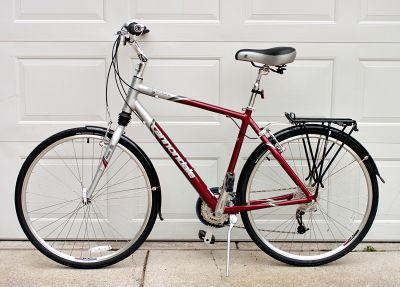 Gruesome
Gruesome Albatross bars
I bought a new bike a couple of weeks ago—hopeful of Spring, as John Camp commented—unfortunately just prior to learning that I should have reserved that money for fixing the garage door. The bike's an aluminum-framed Cannondale called an "Adventure." I immediately named it "Gruesome," after a comment made by Robin P. about the illustration I used in the "Observations" post. (A comment I loved, I hasten to add.) Quoth Robin, "
It's not Gruesome I want to plug here, but rather albatross bars. What are albatross bars, you ask? Well, I didn't know either, until about two weeks ago. They're the kind of bicycle handlebars that were in fashion before "monkey bars" (drop bars) became all the rage in the '70s thanks to what is arguably the most significant bicycle in American history. Well, actually, albatross bars never went out of fashion in about 80% of the world—they're common from Rotterdam to Bangalore to Beijing. They're the rising, swept-back style of bars you'll see on Dutch bikes and old Schwinns.
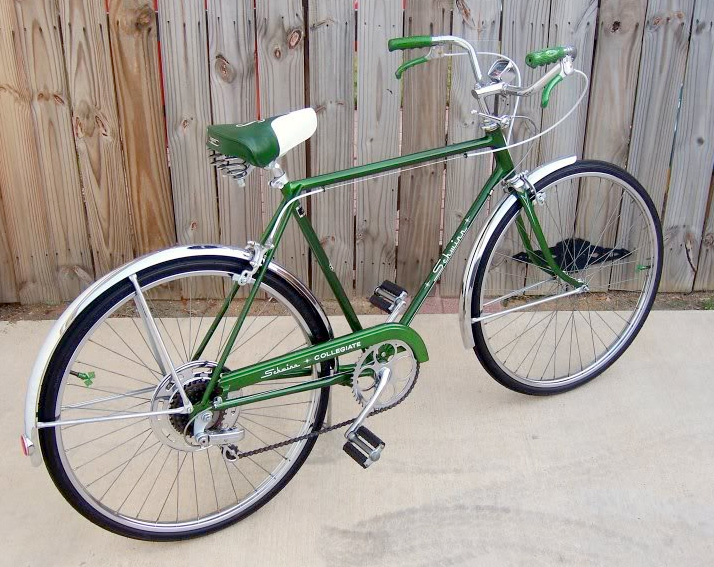 A 1970s Schwinn Collegiate with albatross bars
A 1970s Schwinn Collegiate with albatross bars
I've had some absorbing conversations about bicycle functionality and aesthetics lately with Grant Petersen of Rivendell, and one thing he said to me was that "...the Albatross...is the only bar, that, once you try it, you never leave it." Not surprisingly for a purveyor that decidedly goes its own way, Rivendell sells albatross bars—two kinds, actually, one steel and one aluminum, both made by Nitto.
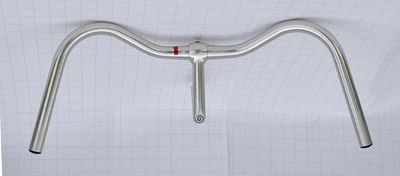 Rivendell albatross aluminum bar by Nitto
Rivendell albatross aluminum bar by Nitto I am gratefully now of an age when I can return to sensible handlebars without having it damage my cool or my cred, not because the bars aren't still a little geeky, but because I have so little cool or cred left. I'm happy about that. To make a long story short, Grant's sending me some Nitto albatross bars for Gruesome, along with a warning that my bike shop won't be pleased about swapping in a new part they didn't sell me and will probably charge me enthusiastically for the privilege. You know what they say: Oh well. I'm looking forward to it. I'll post an update on Gruesome's new albatross fitment once it's actually fitted.
Has this gone on long enough? Thus endeth my plugs for today. Is there any product you've encountered recently that you think is undeniably superior and worth a genuine endorsement? Have a nice and relaxing Sunday.
Mike
*Bob clarifies: "Your amp in kit form or wired was designed to look like an original Dynaco ST-70, yet have the performance of a modern, high-quality tube amp in terms of sound quality and reliability."
Featured Comment by Scott Jones: "OMG, I didn't think anybody else in the whole world had read that book on the history of the pencil! It was really good and every time I mention it to people they just roll their eyes and laugh. Also on the topic of fine art frames, it was so nice to see your comments. My wife always looks at me funny when we go to high grade museum shows and sometimes I am more enthralled with the frames than I am with the paintings. Some of the frames are just plain gorgeous. Thanks for these fun OT musings...."
UPDATE: Nic M. found a nice review of the Wispelwey/Lazik Beethoven.
UPDATE #2: The not-at-all-gruesome bicycle that Robin Pywell built for himself in 1982:

